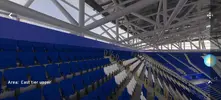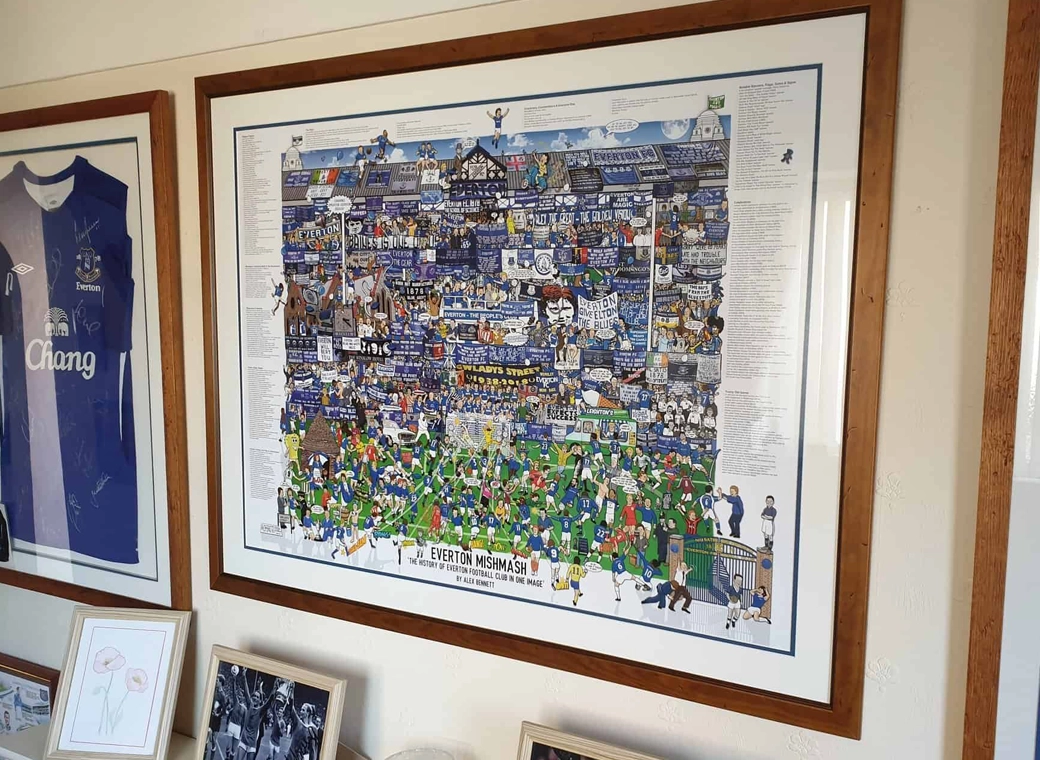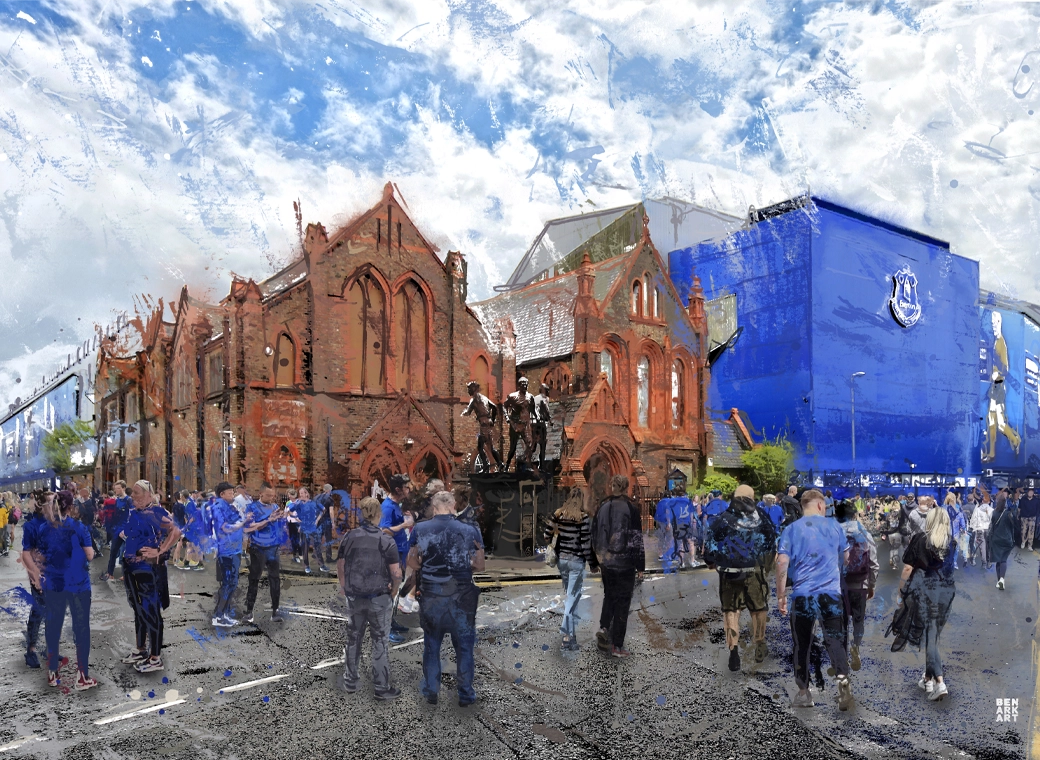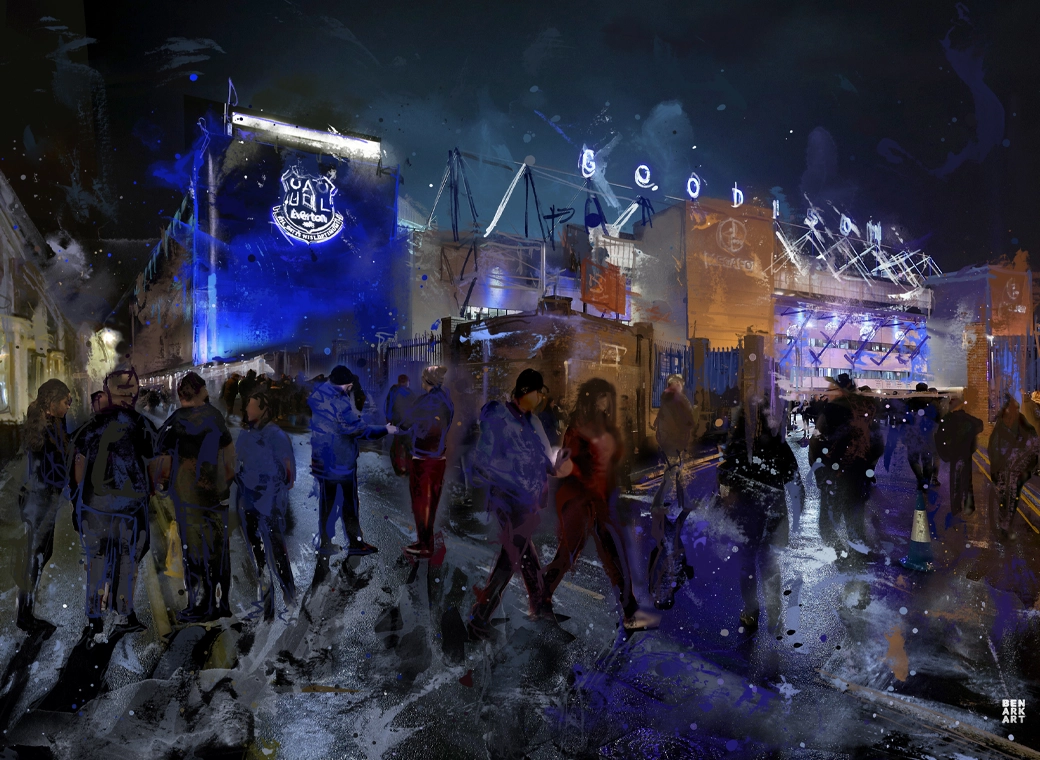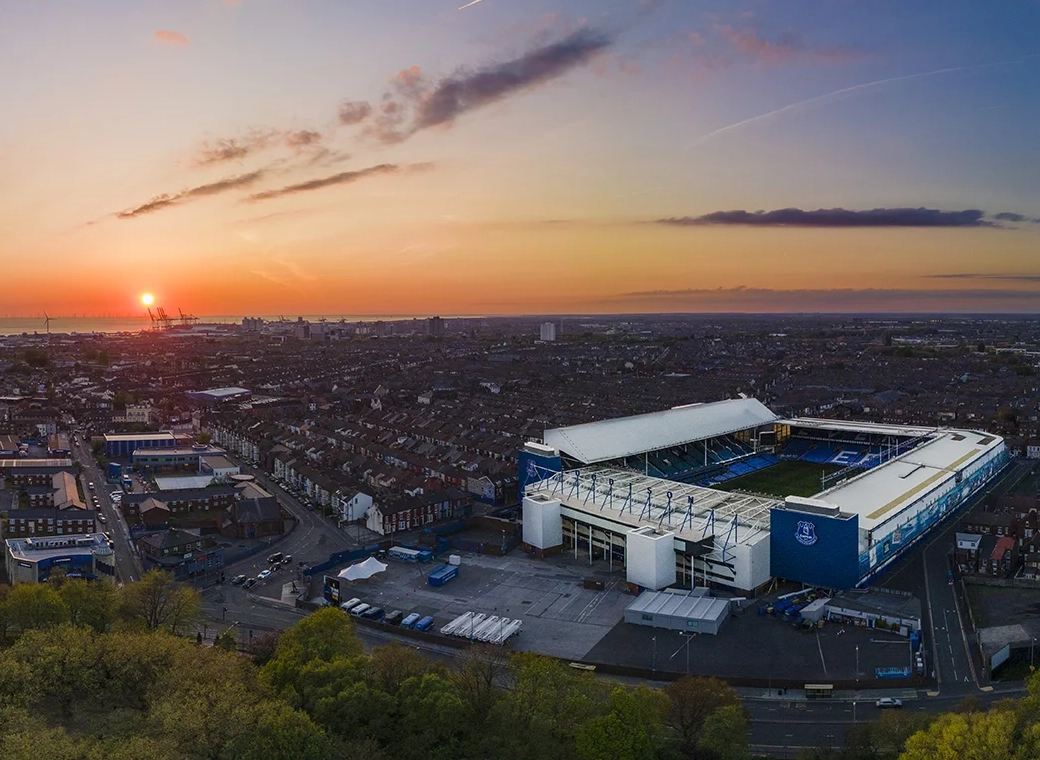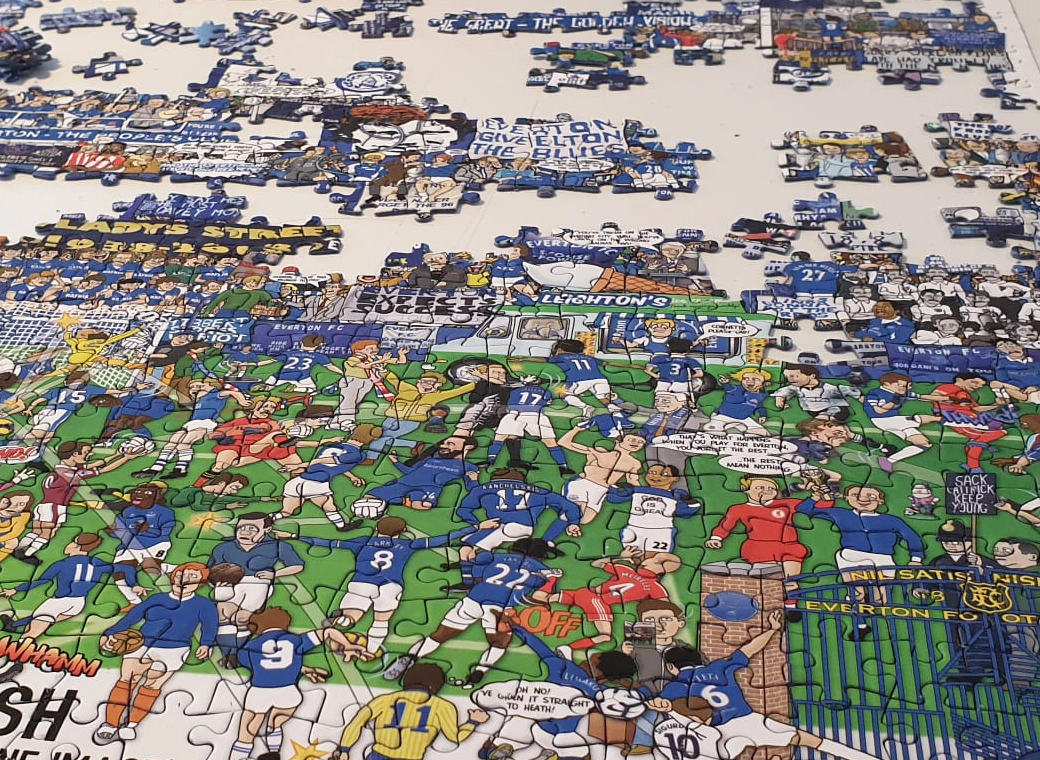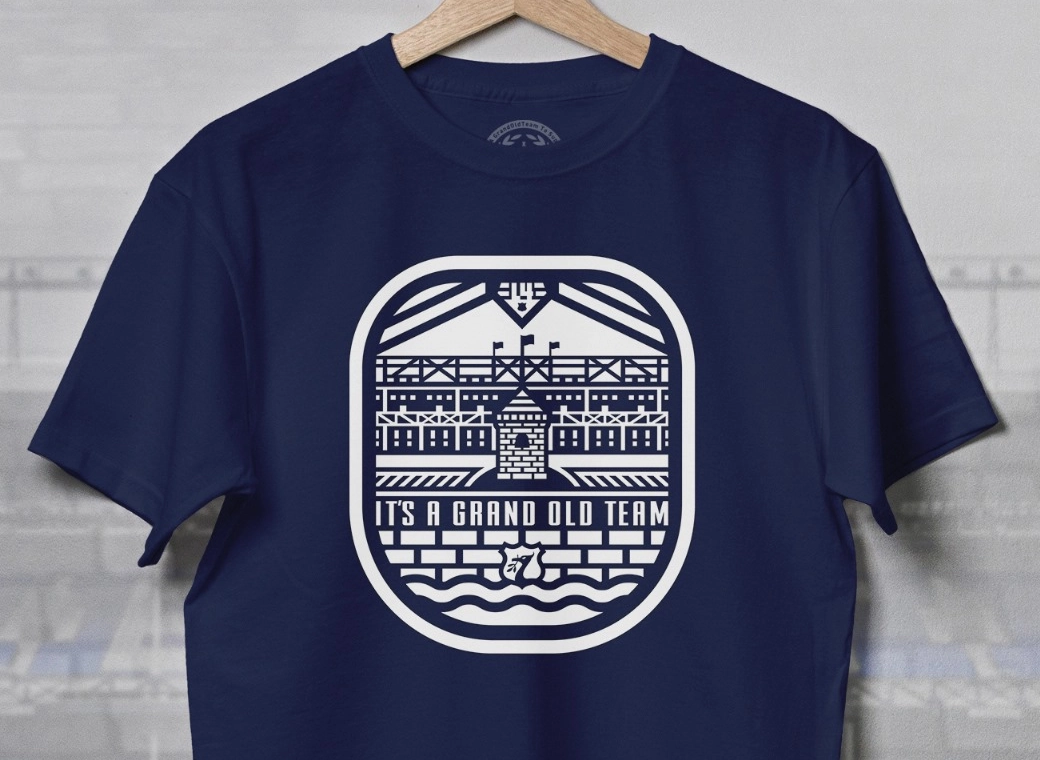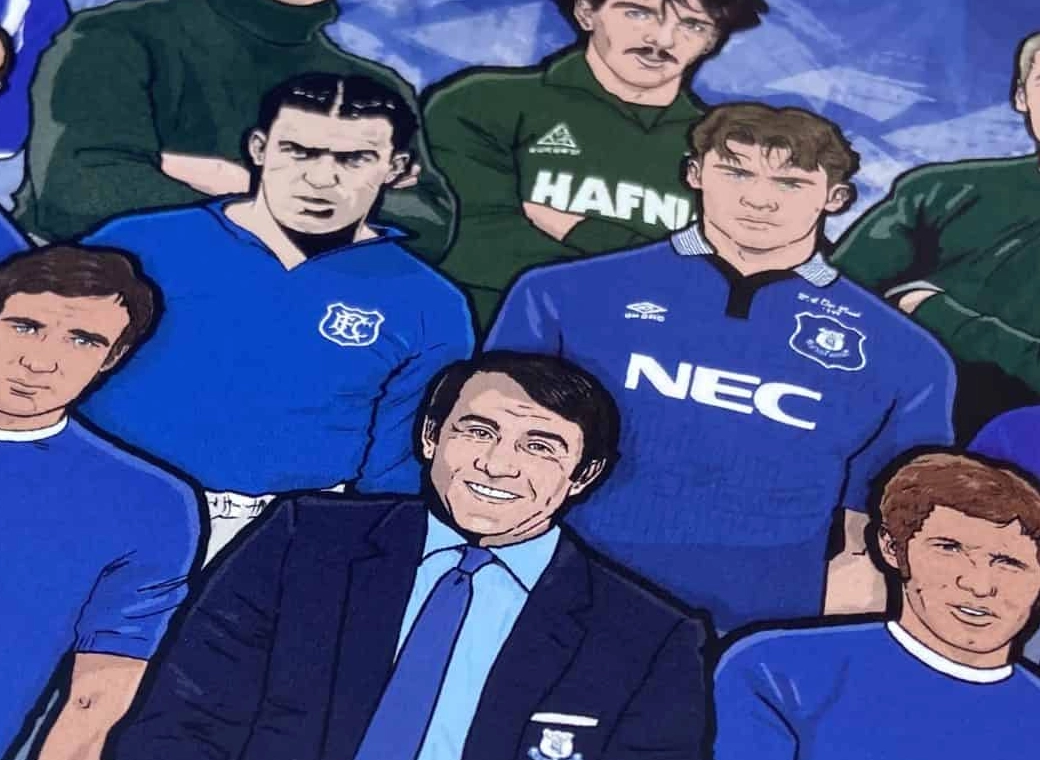The wall only "hides the stadium away" when you are stood right next to it. Simply take a few steps back and cross the road, or move to an area where there is a cut-through. You can easily see it then. One of the aesthetics that Meis was going for was to have the stadium "rise out of the docks" and, doing it like this, as though the roof section hovers above the wall is one way of doing it. The wall does not get in eth way of you seeing the stadium, it could almost be considered as forming a part of the aesthetic and experiential features. Making use of the surroundings, rather than simply removing them.
It could be likened to walking through tight terraced streets for the stadium to be revealed in its entirety only as you get right up to it.
The design of the area surrounding the stadium is, I believe, quite an industrial feel, in keeping with the history. As you walk through the main entrances, the mood of the stadium changes, from the 'wave', to being anchored to its location by brick and steel.
This reveal will of course change in some areas, once the access has been sorted through the other docks as they are developed.

